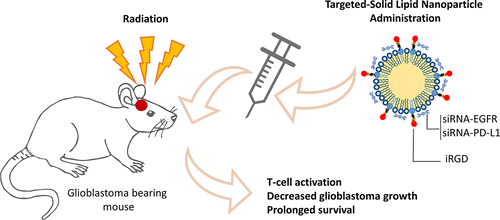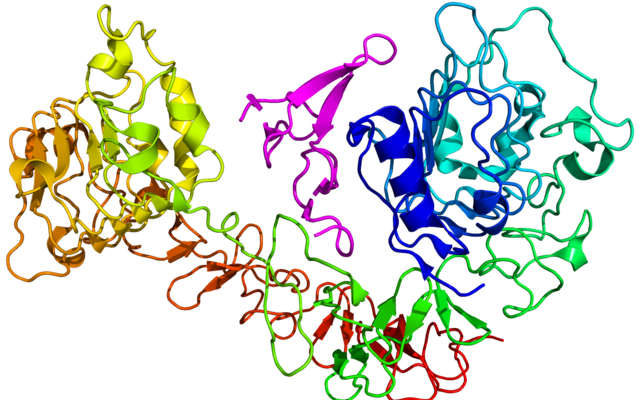Many people with brain tumors will have an operation to remove as much tumor as possible. The goal is to remove what can be safely removed. The next steps may be chemotherapy and/or radiation therapy. In order to explore how radiation may assist in targeting and killing brain tumor cells, a group mainly from the Massachusetts General Hospital, a part of Harvard, studied the response of brain tumors to radiation-induced activation of the body’s immune response.
In this study, “Radiation-Induced Targeted Nanoparticle-Based Gene Delivery for Brain Tumor Therapy” the physicians used mice with Glioblastoma in their brain. They then monitored the reaction of the tumor. From their presentation: “This study combines radiation therapy to prime the tumor for nanoparticle uptake along with the targeting effect of iRGD-conjugated nanoparticles to yield a straightforward but effective approach for combined EGFR [epidermal growth factor receptor] inhibition and immunotherapy against glioblastomas, which can be extended to other aggressive tumor types.”

From their findings, the senior author of the report states, on the Massachusetts General Hospital’s site:
We found that radiation therapy primes brain tumors for enhanced uptake of nanotherapeutics, allowing us to develop a targeted nanoparticle to deliver siRNAs for both immune checkpoint and targeted therapy against the most aggressive type of brain tumor. A brief burst of radiation was able to increase uptake of the nanoparticle up to five-fold, enhancing the effects of targeted therapy, activating the immune response at the tumor site and prolonging survival.
From Bakhos Tannous, PhD, of the Neuro-Oncology Division in the MGH Department of Neurology
Currently, most of the Glioblastomas use EGFR as a growth factor making it an attractive target. However, previous studies that focused solely on targeting EGFR in glioblastomas have been unsuccessful. The current approach which combines EGFR blockade and immunotherapy provides a possible method to get the immune to respond better against the brain tumor’s cells.
Read more details in these two reports mentioned above. We hope these findings although still in the early stages will set the framework for future studies geared towards helping and a making a difference in the lives of glioblastoma patients.

